Embedding a narrative change strategy into community work: lessons on how "immersion" can shift norms
This case study records key lessons from a long-term initiative led by the think tank British Future to shift the narrative on Remembrance in the UK to a more diverse story. Starting from a media campaign targeting "moveable middle" audiences in 2014, British Future and their partners considered how to take a proven narrative strategy and create community level experiences that would socialise or immerse the narrative in a sustainable manner, starting in schools. These interventions have even led to an opportunity to influence the national school curriculum. This focus on immersion work in strategic communications strategies shows how the everyday work of civic actors can be part of a broader narrative change goal and how real attitude changes can be sustained beyond media cycles or standard comms interventions and targets.
Defining immersion
Targeting immersion is a key element in the theory of change of strategic communications. The ultimate aim of immersion is changing the unwritten rules of culture (or norms) in order to pave the way for a more sustainable change of the written rules of policy and law. The #MeToo movement is a good recent example of how the unwritten rules of culture began to change to the point that certain language and behaviour becomes unacceptable and this leads to strengthened legal responses. Immersion interventions in practical terms include: taking tried and tested narratives to social cohesion work, community engagement or service provision; developing events or experiences in which people from different backgrounds are in contact with one another; and even the feeding in of these new narratives into existing cultural content in TV/film (often known as cultural placement or cultural strategy).
ICPA thinking and theory of change has been inspired by Rashad Robinson, from Color of Change USA, who has found the approach of jumping straight from presence (promoting their narratives widely and persistently in public debate through media work and campaigns), to power (advocating for legal and policy change) often is not enough to deliver sustainable and more widely accepted change. Immersing your narrative is a key stepping stone in narrative change activism, that aims for them to be internalised through deeper experiences and interactions, ensuring the narrative is not only known, but owned.
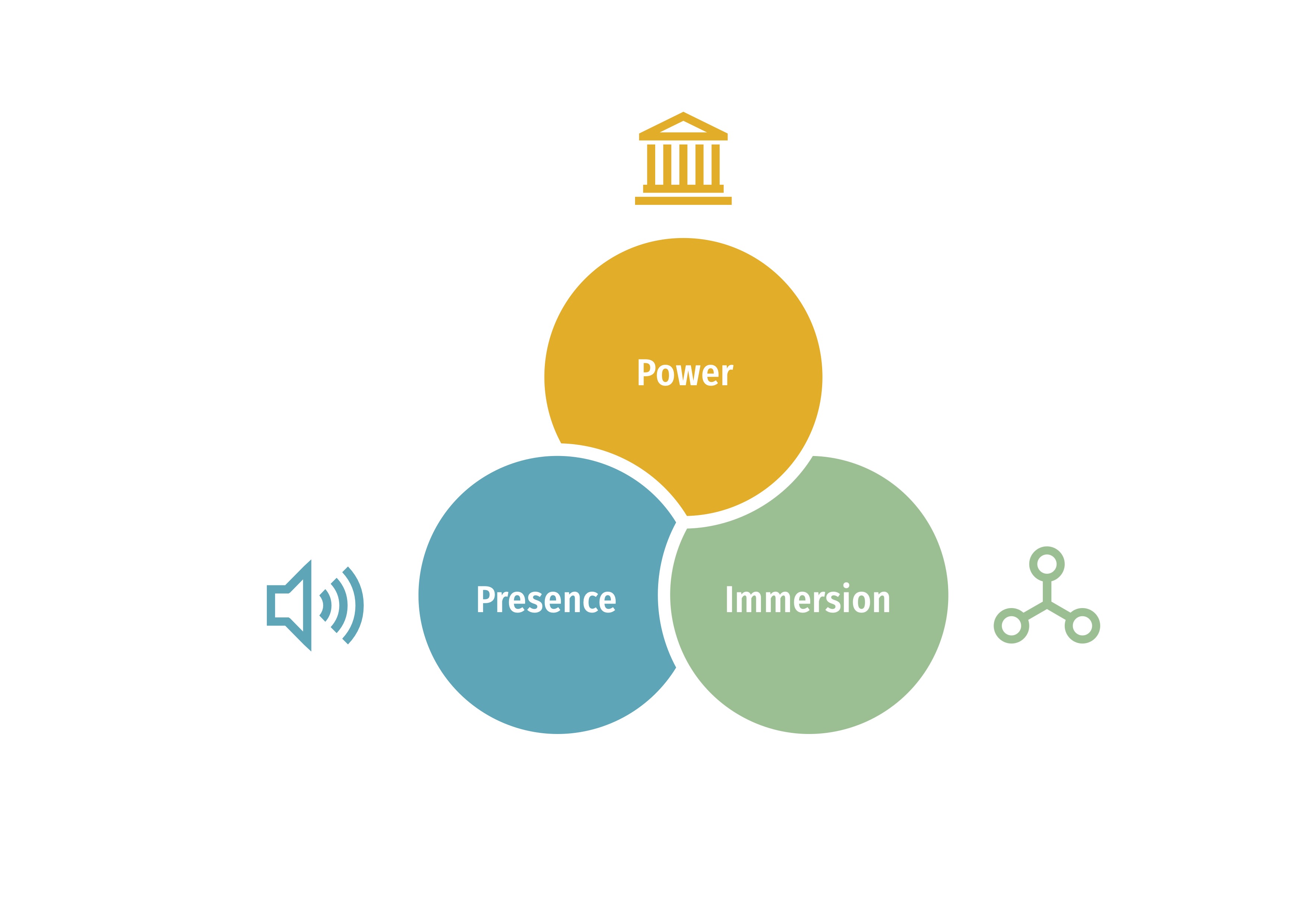
This case study provides an overview of a narrative immersion project in the UK and the lessons we can take away from it.
Remember Together - An overview
British Future has designed and implemented a variety of strategic communications initiatives around the British commemoration of the two World Wars in collaboration with British Legion (the UK’s largest Armed Forces charity) and other organisations. The initiatives highlight the contribution made by Black and Asian service men and women from across the Commonwealth and engage audiences such as the “moveable middle” and minority communities. They aim to bring people from different backgrounds together (online and offline) to commemorate their shared history, uncover common ground, and embed a more diverse/inclusive Remembrance narrative in people’s minds and relationships.
Since 2014, British Future has implemented three main initiatives in their work around Remembrance:
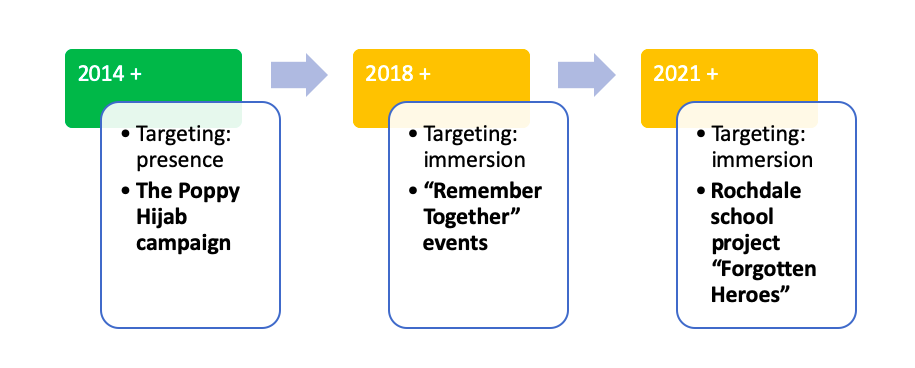
The 2014 “Poppy Hijab” campaign was an online campaign that paved the way for the in-person immersion events. It commemorated the 400,000 Muslim soldiers who fought alongside British troops in WW1. In collaboration with the British Islamic Society, NGO New Horizons in British Islam, and fashion designer Tabinda-Kauser Ishaq, British Future created a hijab featuring the commemorative poppy. It was launched in the conservative newspaper, The Daily Telegraph, reaching moveable middle audiences and showed positive attitude shifts in these groups in support of a more diverse story of remembrance.
British Future recognised that if people were to be really immersed in the new diverse Remembrance narrative, they needed to convene deeper experiences and interactions to get the narrative owned. Since 2019, they have organised in-person events in cities around the UK (Birmingham, London, Bradford, Derby Leicester and Boston). In 2021, Rochdale school reached out to British Future independently to run their own events.
It's worth noting that British Future call their Remembrance narrative change work “inclusive patriotism”. We recognise that this approach or messaging around military history in a colonial past is not a good fit for many activists, but there are still many lessons we can learn from the intervention. Secondly, it is also worth saying that the offline community and school interventions are at the earlier stages of immersing a new Remembrance narrative at scale, but show much promise.
Remember Together - Five key lessons
Five key lessons stand out from the project that offer inspiration and key strategic insights on how to immerse people in the narrative you want to normalise.
1) Create opportunities for “discovery” of your narrative
Unlike narrative change campaigns and media work that disseminate messages to passive audiences, events targeting immersion allow a broad range of audiences to participate and experiment. Targeting immersion involves a shift from the dissemination to the discovery of new narratives through deeper experiences and interactions. In giving people ways to express the narrative for themselves, narratives become owned and ultimately, internalised.
The events in the Remember Together initiative across the UK offered fun, playful and interactive activities that enabled people from diverse backgrounds to work together towards a shared goal. An event in Leicester convened the general public together with Sikh and Caribbean community groups, and ran an Indian sweet making workshop inspired by “Indian Comforts Fund” which sent food and clothing to frontline Indian soldiers during WW2. Poppy-making workshops were held in schools in Bradford, London, Derby where children from different backgrounds came together to learn about the diversity of soldiers who fought in the wars. Poppy and sweet making activities have a “show don’t tell” quality: people were able to jump into the pool of these new narratives themselves, and in their own time, swim around and find their own path, their own entry points, take ownership and have fun!
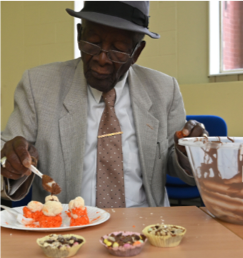
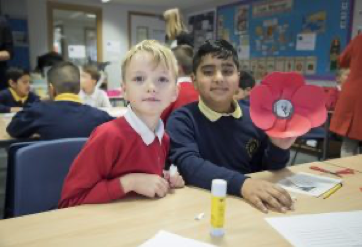
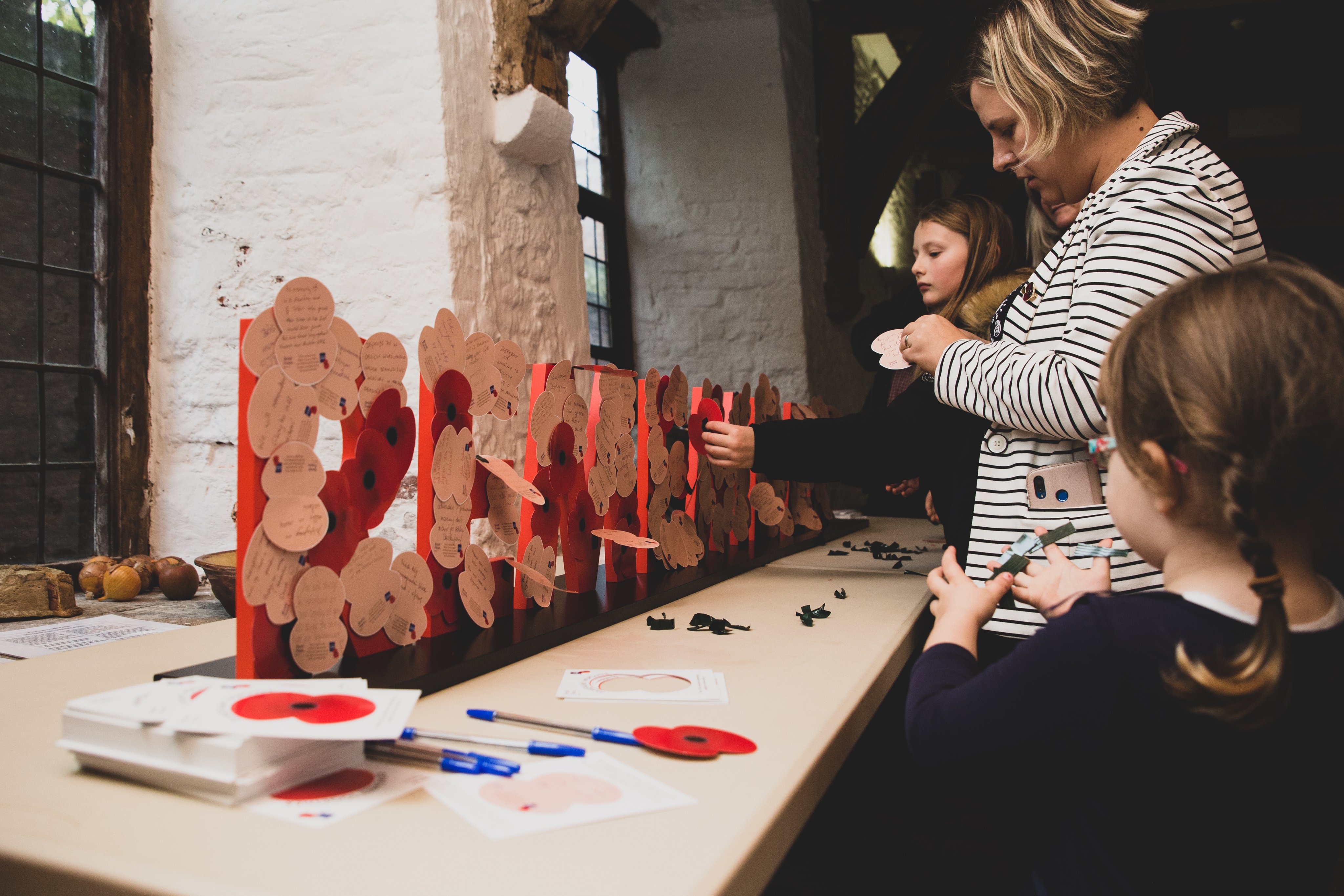
People from different backgrounds came together at school and community events to work towards a shared goal (making poppies or sweets).
2) Strategise for a ripple effect
When targeting immersion, don’t stop at the end of an event. To really shift cultural norms, immersion aims to ripple out and act at scale – even when implemented locally. British Future and partners have designed for an expansion and projection of the new narratives into the community, not just in the schools. For example, the children from the two schools in Bradford (one ethnically mixed, the other mostly white), took their hand-made poppies to the town hall with their parents for Remembrance Day, enabling the broader community to engage in this story of contact and shared remembrance. There were immediately perceptible shifts, with local councillors reporting a more diverse attitude around Remembrance.
British Future and partners (the Linking Network and British Legion) have also created “resource packs” for use at school events, which can be replicated in other contexts. Thanks to the ripple effect, new narratives become carried across various cultural forums – from schools to public ceremonies – to reach different audiences.
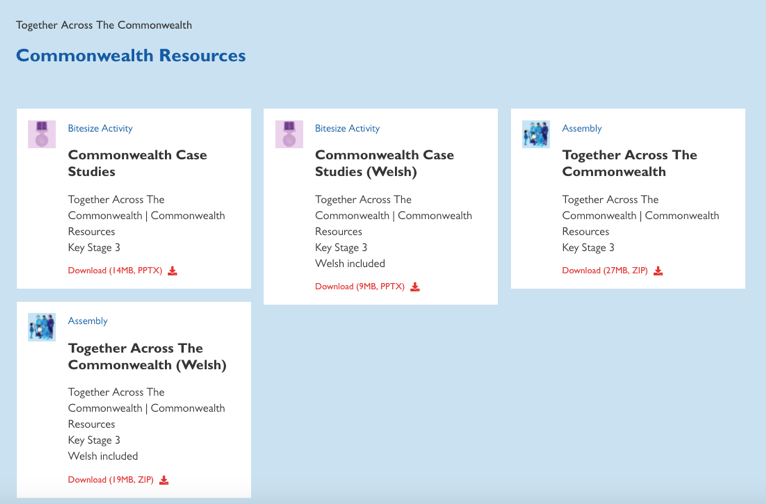
The Royal British Legion’s resource pack (for Key Stage 1, 2 & 3). Schools can replicate the events in other contexts – demonstrating the “ripple effect” of immersion events.
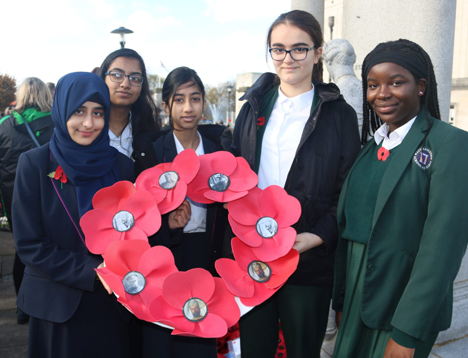
School children from two separate schools took their hand-made poppies to a public Remembrance event – demonstrating the possibility to strategise for a “ripple effect” when targeting immersion.
3) "Hook" your activities onto a recurring entry point
Campaigns and activities gravitate around the UK’s annual event in November: “Remembrance Day”. Attaching your work onto a recurring “hook” like this means it has the potential to repeat over time, build momentum, and really immerse people in the “sustained series of narrative experiences required to enduringly change hearts, minds, behaviours and relationships” (Robinson, 2018). Eventually, over time Remembrance Day might trigger a common-sense story of diverse contribution which is internalised and owned by the community. Small moves in this direction can already be seen from political leaders with Prime Minister Boris Johnson and Labour leader Keir Starmer both voiced support for the initiative in 2020: “Thanks to the efforts of Remember Together, we will also remember that we have never stood alone” – Keir Starmer.
4) Effective immersion initiatives grow like a wild garden
Two years after British Future started convening community events, a teacher from an ethnically diverse school in Rochdale (Greater Manchester) independently reached out to British Future in 2021 while designing his own oral history project, “Forgotten Heroes”. British Future was invited to hold a webinar for the class, then children investigated their own families’ histories and a call for stories was shared through the local Council of Mosques and aired on the local radio (10 families responded). So far, the project has been a great success for everyone involved and in July 2021, the project won the Royal Society of Arts Award for impact on their local community.
Here, we can see the Remember Together initiative taking on a life of its own and growing like a wild garden. Seeds of new narratives and events to immerse them were initially sewn, but over time, awareness of and interest in these narratives sprouted, independent from British Future. In the wild garden, the need for gardener maintenance and intervention is minimised as the plants cross-pollinate and grow themselves. Only then can new narratives reach a level of self-reproducing sustainability and community-driven authenticity that paves the way for immersion at scale and eventually, progressive policy change.
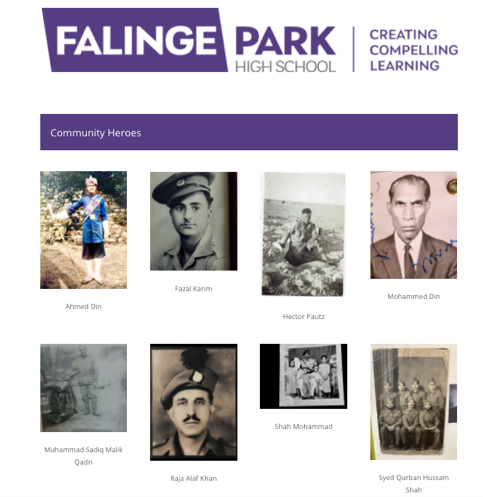
Screenshot of the Rochdale school website – showcasing the “Forgotten Heroes” oral history project – an independent initiative developed by the school but supported by British Future. The project embeds the new, more inclusive Remembrance narrative in the community.
5) See narrative change as a bridge to power
While Remember Together is at the early stages of broad scale immersion, there are already hints that the resonance of the intervention could lead to policy changes that institutionalise the target diversity narrative. We mentioned above the public support from political leaders. In addition, partners have already pushed for the story of diversity to be included in the national curriculum which ensures the reach and sustainability needed for successful immersion. More broadly, narrative change around Remembrance has made a contribution to opening up the space for more structural changes in education policy, as demonstrated by MPs debating changing the curriculum to include more diverse histories (including war history) in Parliament. So, by slow accretion and through broad scale mobilisation, we can see that narrative change acts a bridge to power.
Conclusion
Immersing your narrative is a key, often missing step in narrative change activism. It aims for new narratives to be internalised through deeper experiences and interactions, and often connect with the everyday work and community interactions of many civil society organisations. This case study shows that this level of immersion is needed in order to sustainably shift norms and build the political will needed to effectively influence policy and law.
This case study was developed by the ICPA Strategic Communications Incubator team on the basis of interviews with Sunder Katwala from British Future and Vacas Ahmed from Falinge Park High School (Rochdale) and analysis of internal and public documents pertaining to British Future’s narrative change work around Remembrance. Gratitude to Sunder and Vacas for generously sharing their experience and thinking.
The case study was developed in the framework of ICPA’s RESET project as part of a set of resources to support the strategic communications work of a network of German activists. Support for researching and developing the case study was provided by:
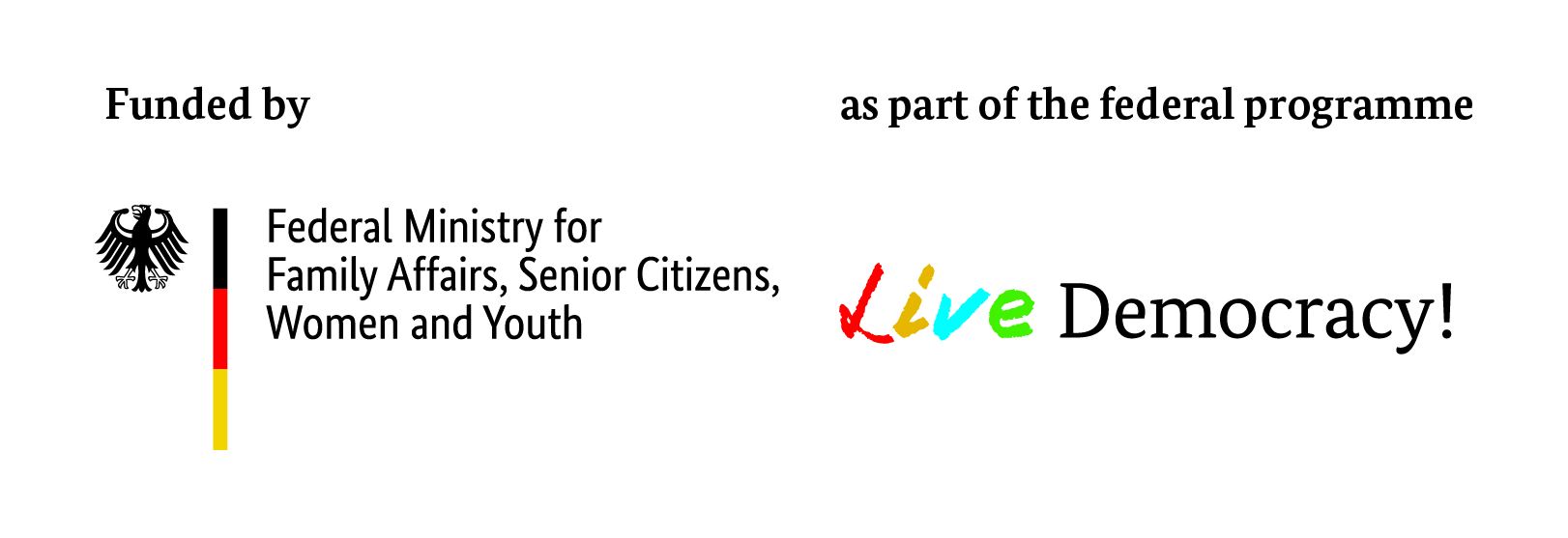

This publication does not express the opinions of BMFSFJ or BAFzA. The authors are solely responsible for the content of the publication.